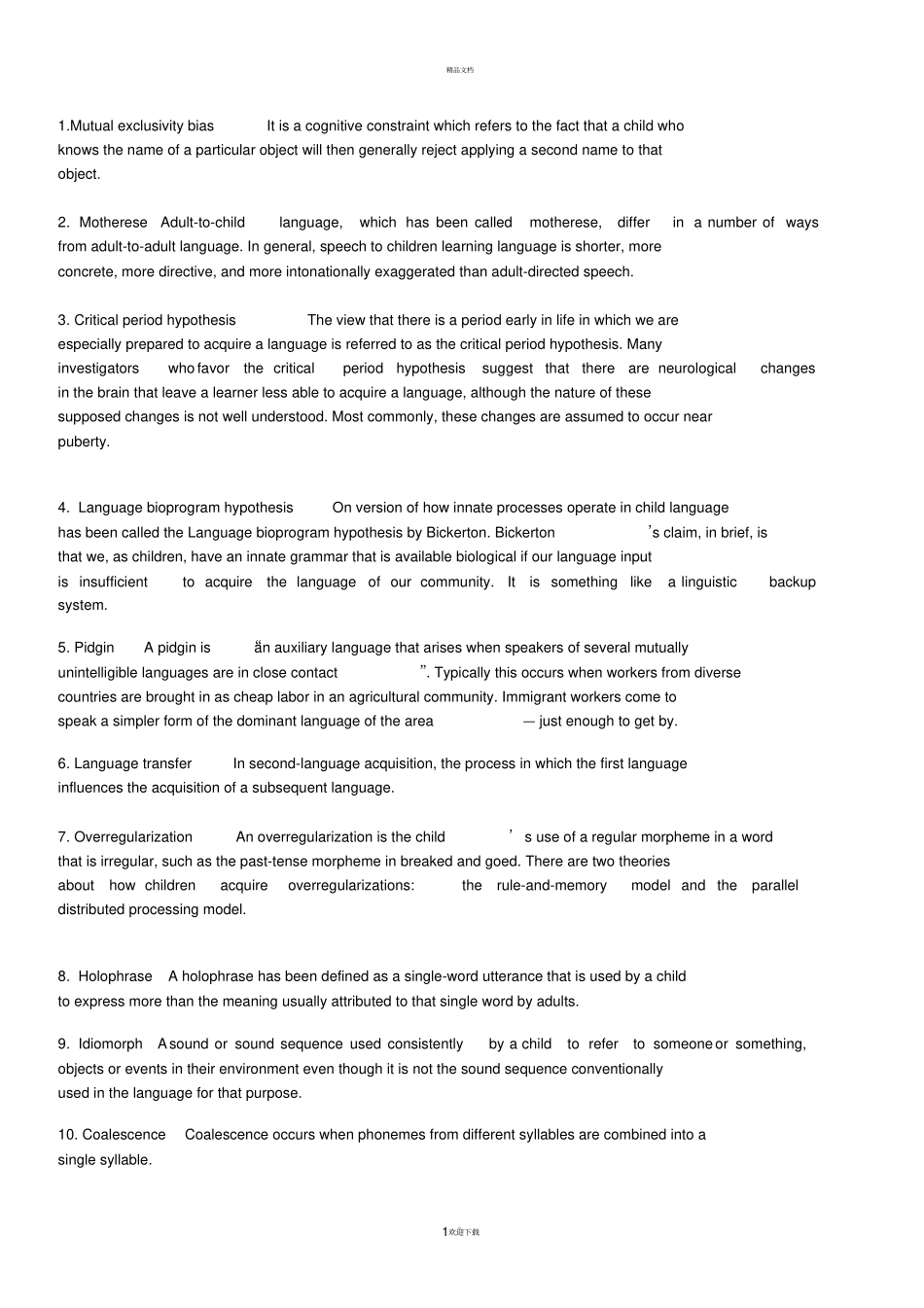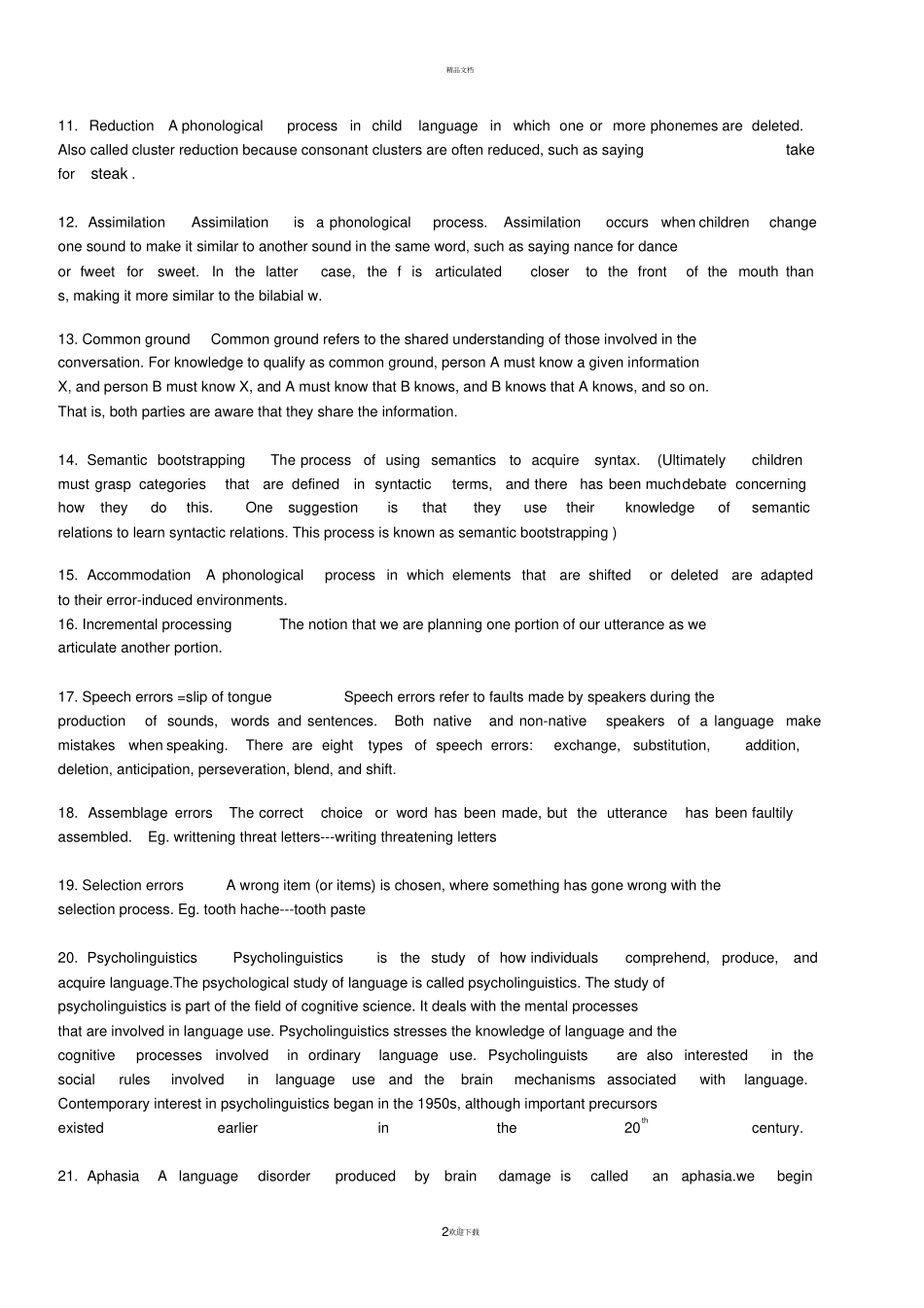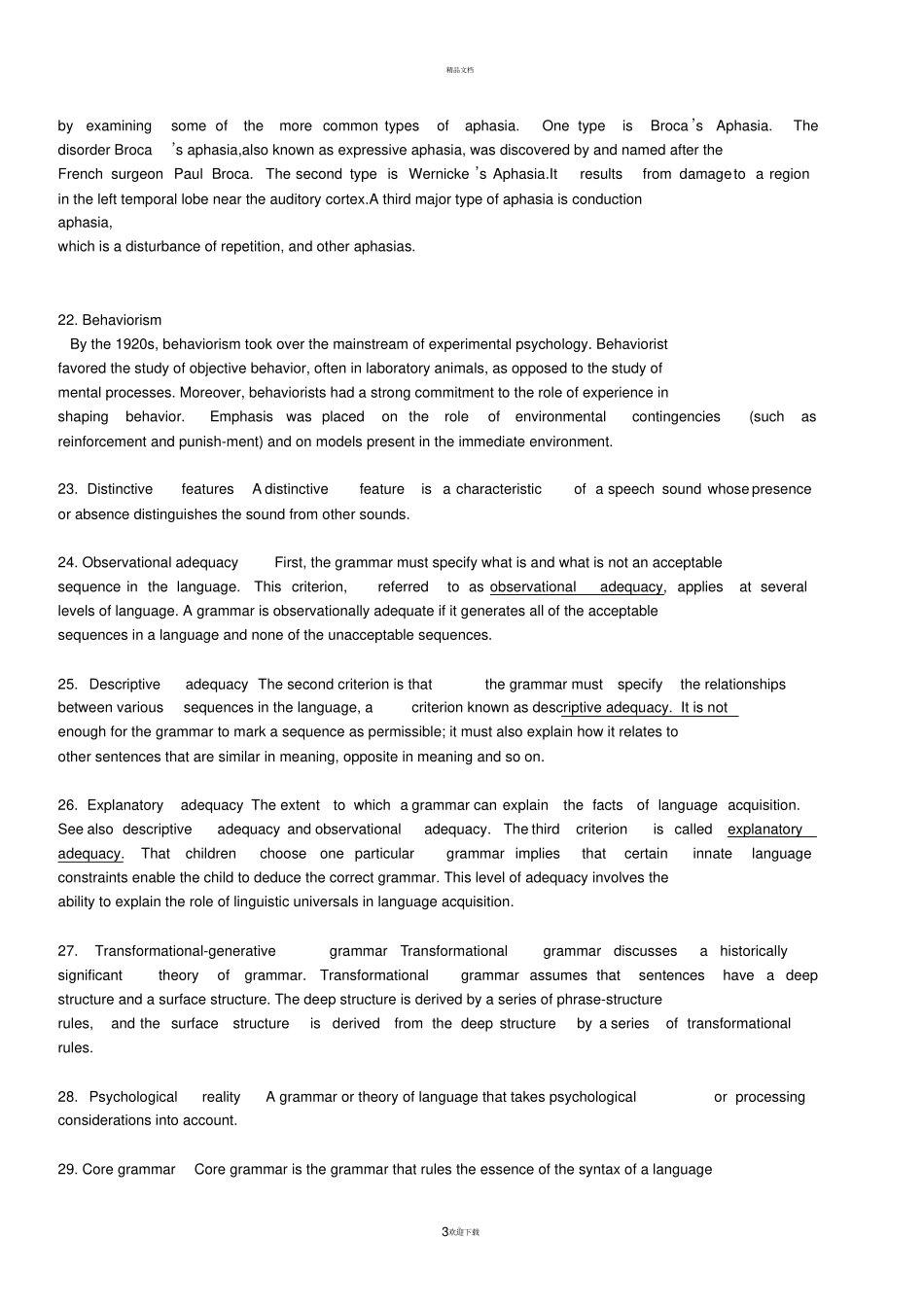精品文档。1欢迎下载1.Mutual exclusivity bias It is a cognitive constraint which refers to the fact that a child who knows the name of a particular object will then generally reject applying a second name to that object.2. Motherese Adult-to-child language, which has been called motherese, differ in a number of ways from adult-to-adult language. In general, speech to children learning language is shorter, more concrete, more directive, and more intonationally exaggerated than adult-directed speech.3. Critical period hypothesis The view that there is a period early in life in which we are especially prepared to acquire a language is referred to as the critical period hypothesis. Many investigators who favor the critical period hypothesis suggest that there are neurological changes in the brain that leave a learner less able to acquire a language, although the nature of these supposed changes is not well understood. Most commonly, these changes are assumed to occur near puberty. 4. Language bioprogram hypothesis On version of how innate processes operate in child language has been called the Language bioprogram hypothesis by Bickerton. Bickerton’s claim, in brief, is that we, as children, have an innate grammar that is available biological if our language input is insufficient to acquire the language of our community. It is something like a linguistic backup system.5. Pidgin A pidgin is “an auxiliary language that arises when speakers of several mutually unintelligible languages are in close contact”. Typically this occurs when workers from diverse countries are brought in as cheap labor in an agricultural community. Immigrant workers come to speak a simpler form of the dominant language of the area— j...


